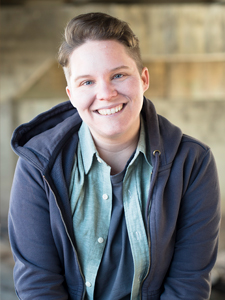 When Kaiser Permanente gave Lindsey Loberg an income-based repayment plan, there was simply no room for negotiation. In 2021, a hysterectomy left the trans Colorado non-profit worker with a bill for $6,900, and they were now expected to pay it back in monthly installments of $263.
When Kaiser Permanente gave Lindsey Loberg an income-based repayment plan, there was simply no room for negotiation. In 2021, a hysterectomy left the trans Colorado non-profit worker with a bill for $6,900, and they were now expected to pay it back in monthly installments of $263.
From the beginning, Lindsey knew they wouldn’t be able to pay the entire cost of the gender-affirming surgery at once. However, they weren’t prepared for the hospital’s inflexibility on how fast it had to be paid back.
The monthly payment was too expensive for Lindsey to afford, but the hospital wouldn’t budge.
“Kaiser said it was the lowest that they could go with the payment amount. For me, and a lot of other people, frankly, paying that bill means I don’t get something else that I need. I don’t or my family doesn’t,” Lindsey said.
An estimated 21% of Americans have medical debt in the form of a payment plan with a medical provider, according to the KFF Health Care Debt Survey conducted earlier this year. Among respondents with health care debt, 63% said they or their household had to cut back spending on basic necessities to pay off their debt, the survey found.
Through their job working for a non-profit food distributor, Lindsey says they have seen people faced with impossible choices about how they spend on basic necessities like food.
“People put off medical care because they need to buy food or pay their rent. That’s a tradeoff that they have to make. This is a really big part of people’s lives, and it’s not difficult to make the connections about how these choices, or lack of choices, reinforce each other and ultimately mean that people have poor health outcomes,” Lindsey said.
In order to cover the $263 monthly expense, Lindsey had to use funds budgeted toward other expenses, like transportation, food, and therapy costs, even with some relief from the recent pause on student loan repayments.
They spent over a year recovering from two major procedures — the hysterectomy and top surgery, which they also had in 2021 to take advantage of reaching their insurance plan’s out-of-pocket maximum.
Lindsey had paid $2,630 of the total bill before finding out from a friend about Dollar For’s work to crush medical bills by making charity care known, easy, and fair.
Before that, Lindsey had heard about charity care, but didn’t realize they qualified for it with their income level.
Through Dollar for, Lindsey learned that the Affordable Care Act requires nonprofit hospitals to offer charity care programs to keep their tax-exempt status. These financial assistance programs reduce or eliminate medical bills for low-to-middle income patients.
“The application itself was pretty self-explanatory and easy,” Lindsey said.
Several months passed, and Kaiser confirmed that the remaining balance on the bill — $3,663.48 — had been canceled.
Since then, Lindsey has been seeking ways to help further Dollar For’s advocacy work, including telling everyone they know with outstanding medical bills.
“I was so excited, and excited to share. I love when people win.”
Do you qualify for financial assistance at your hospital? Our 3-minute form can tell you.
